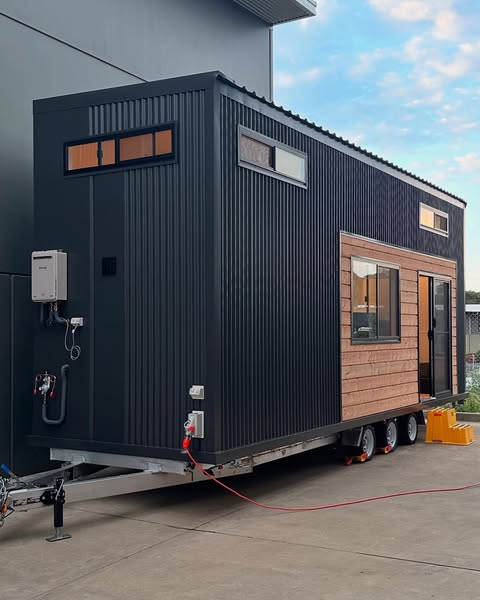In recent years, the concept of tiny living has captured the imagination of Australians looking for more sustainable, affordable, and flexible housing solutions. With skyrocketing property prices in major cities and growing environmental concerns, many are now turning toward tiny homes for sale in Australia as a viable alternative to traditional housing. But what exactly is a tiny home, and why is it becoming so popular across the country?
What Are Tiny Homes?
Tiny homes are compact dwellings typically ranging between 10 to 50 square metres in size. Built on either wheels (making them mobile) or fixed foundations, these homes are designed to maximise functionality in a limited space. Despite their size, modern tiny homes are equipped with all the essential amenities, including a kitchenette, bathroom, sleeping area, and smart storage solutions.
Tiny homes are not just about downsizing physical space—they represent a shift in lifestyle. They promote minimalism, reduce carbon footprints, and allow for financial freedom by reducing mortgage debt and ongoing costs.
Why Tiny Homes Are Gaining Popularity in Australia
1. Affordability
The average cost of a tiny home in Australia ranges from $50,000 to $120,000, a fraction of the cost of a conventional home. For first-time buyers, retirees, or those looking to escape the rental cycle, this makes tiny homes a smart investment. With the housing affordability crisis deepening in metropolitan areas, tiny homes provide a gateway to home ownership without the financial burden of a large mortgage.
2. Eco-Friendly Living
Tiny homes use fewer building materials and require less energy to maintain. Many are also fitted with solar panels, composting toilets, and rainwater harvesting systems. These sustainable features appeal to Australians who are increasingly conscious of their environmental impact.
3. Flexibility and Mobility
One of the biggest advantages of tiny homes on wheels is the ability to move them. Whether it’s relocating closer to nature or moving for work, mobility gives owners unparalleled freedom. In rural or off-grid locations, tiny homes can be placed without the need for large infrastructure or land development.
4. Simplified Lifestyle
Living in a tiny home requires owners to be selective about what they keep, fostering a minimalist lifestyle. This often translates into less stress, fewer possessions, and more time for meaningful experiences.
Types of Tiny Homes for Sale in Australia
Australia offers a diverse range of tiny homes catering to different needs and lifestyles:
- Tiny Homes on Wheels (THOWs): Ideal for mobility and flexibility.
- Container Homes: Built using repurposed shipping containers; durable and industrial in style.
- Prefab Tiny Houses: Factory-built and delivered to your location, reducing construction time.
- DIY Tiny Home Kits: For those who enjoy hands-on building and customisation.
- Eco Cabins and Off-grid Tiny Homes: Equipped with sustainable technology for self-sufficient living.
Where Can You Buy Tiny Homes in Australia?
Several reputable builders and platforms across Australia specialise in tiny homes:
- Hauslein (NSW): Known for luxury interiors and high-quality finishes.
- Tiny Real Estate (QLD): Australia’s largest tiny house marketplace for buying and selling.
- Designer Eco Tiny Homes (NSW): Offers off-grid and mobile tiny house options.
- Off Grid Tiny Houses (VIC): Focused on sustainable and fully self-contained builds.
Before purchasing, it’s advisable to visit display homes, speak with previous buyers, and compare features and warranty options.
What to Consider Before Buying
1. Council Regulations and Zoning
Local councils across Australia have varying rules regarding where tiny homes can be parked or built. It’s essential to research zoning laws and obtain necessary permits, especially for permanent dwellings.
2. Utilities and Infrastructure
Will your tiny home be connected to electricity, water, and sewage? Or will it be off-grid? Planning for utilities is crucial for a comfortable living experience.
3. Land Availability
If you’re not planning to live in a caravan park or on family property, you’ll need access to suitable land. Some tiny homeowners choose to rent land in rural areas or purchase small plots outside city limits.
4. Financing Options
Because tiny homes often don’t qualify for standard home loans, many buyers opt for personal loans or alternative financing options. Some builders also offer payment plans or partnerships with lenders.
Is a Tiny Home Right for You?
Tiny living is not for everyone. It requires a willingness to declutter, adapt to compact spaces, and sometimes face challenges in finding legal parking spots. However, for those seeking financial freedom, eco-conscious living, and mobility, a tiny home can be a liberating and fulfilling choice.
Whether you're a single professional wanting a weekend escape, a retiree looking to downsize, or a young couple seeking your first home, tiny homes offer a customisable and cost-effective housing option that aligns with modern values.
Final Thoughts
As Australia continues to rethink traditional housing in the face of affordability issues and sustainability concerns, tiny homes for sale in Australia represent a bold and creative shift toward smarter living. With the right planning, legal knowledge, and lifestyle mindset, owning a tiny home can lead to a richer, more intentional way of life—without the hefty price tag.






Comments